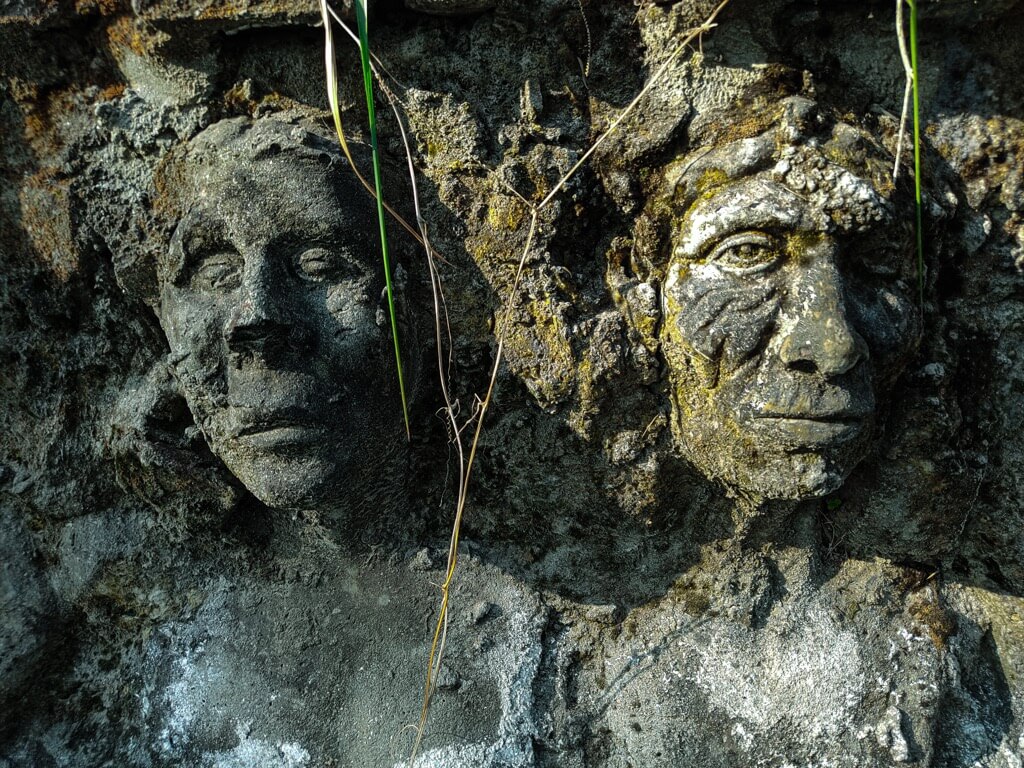Xanadu’s Enigmatic Caves Explored

In 1974, a defining moment unfolded in the Whetstone Mountains when two intrepid explorers, Gary Tenen and Randy Tufts of the Southern Arizona Grotto spelunking club, embarked on an expedition that would unravel the enigmatic caves of Xanadu.
Armed with minimal equipment—gas carbine lantern-equipped hard hats, basic tools, and sheer determination—Tufts and Tenen set out on a journey just an hour outside Tucson, driven by Tufts’ nostalgia for a location he had glimpsed during his high school years.
Their exploration began with a plunge into a dry, dusty fifteen-foot-deep sinkhole marked with an intriguing skull and crossbones carving. Footprints, fractured stalactites, and a 10-inch-wide fissure hinted at hidden secrets. A telltale warm, bat-scented wind signaled the presence of a potentially fascinating cave system.
Cautiously navigating the tight crevices, the duo persisted, overcoming physical obstacles to uncover a chamber housing a stalagmite. Their determination led them further, wriggling through gravel until they discovered a rock formation housing a mysterious “blowhole,” a significant indicator in cave exploration.
Hours of chiseling granted them access to a hidden corridor adorned with delicate “soda straws” and dripping stalactites, unseen by any previous explorer. Their journey revealed magnificent rooms embellished with orange stalactites, calcite scrolls, and towering piles of bat guano, a testament to the cave’s untouched splendor.
Despite their awe-inspiring discovery, the cavern’s enormity posed challenges, some chambers remaining inadequately lit even with their powerful lights. Cognizant of the risks of delving further without sufficient illumination or knowledge of their whereabouts, Tenen and Tufts made plans to return for a more extensive exploration.
The Benefits Of Caving
Caving offers a unique blend of physical activity and adventure. It challenges enthusiasts to navigate through tight spaces, climb rock formations, and overcome obstacles, contributing significantly to overall physical fitness. The exploration aspect fuels adrenaline and offers an unparalleled sense of adventure, making it an appealing choice for those seeking an active and thrilling pursuit.
Exploring caves grants access to hidden ecosystems teeming with unique life forms. These subterranean habitats often house rare animals, microbes, and ecosystems that provide invaluable insights into the planet’s biodiversity. Through caving, enthusiasts get the opportunity to witness these remarkable creatures firsthand and contribute to the understanding and preservation of these fragile ecosystems.
Caves hold a wealth of scientific treasures, offering a glimpse into the Earth’s history. The geological formations, mineral deposits, and unique ecosystems found within caves provide researchers with invaluable data to understand Earth’s evolution. Each expedition into caves presents an opportunity for scientific discovery, contributing to our knowledge of geological processes and biodiversity.
Navigating through caves demands mental acuity and problem-solving skills. Explorers must analyze the terrain, anticipate challenges, and adapt to changing environments. This mental stimulation fosters critical thinking, and decision-making, and enhances problem-solving abilities, making caving an intellectually rewarding activity.
A Practical Guide To Caving
Ensure you have essential gear: a sturdy helmet with a headlamp, sturdy footwear with good traction, durable clothing suitable for the cave environment (consider moisture and temperature changes), gloves for protection, and a small backpack for carrying essentials.
Always go caving with a knowledgeable guide or experienced companions. Familiarize yourself with basic caving safety protocols, including informing someone about your plans, carrying multiple sources of light, and staying together as a group. Be mindful of potential hazards like loose rocks, slippery surfaces, and low ceilings.
Respect the delicate cave ecosystem. Avoid touching formations as they are fragile and can take hundreds of years to form. Be mindful of cave inhabitants like bats; avoid disturbing them to preserve their habitat and prevent the spread of diseases.
Before entering, study maps and gather information about the cave system. Pay close attention to markers or natural features to aid navigation. Use caution and note landmarks to avoid getting lost. Always be aware of your surroundings and take note of any changes in the environment.
Adhere to Leave-No-Trace principles by packing out all waste, including food wrappers and tissues. Minimize noise and avoid altering the cave environment. Do not remove or damage any formations, rocks, or cave features.
Carry a first aid kit and be prepared for emergencies. Familiarize yourself with basic first aid techniques and know how to handle common cave-related injuries. Establish communication methods and be ready to seek help if needed.
Xanadu’s caves stand as geological time capsules, preserving a record of Earth’s history. The formations within these caves, from stalactites to intricate rock structures, chronicle the slow passage of time, offering scientists invaluable insights into geological processes spanning tens of thousands to hundreds of thousands of years.
These caves are not mere hollow spaces; they’re thriving ecosystems supporting unique and often rare life forms. The diverse flora and fauna found within Xanadu’s depths provide scientists with opportunities for studying evolutionary adaptations and biodiversity, contributing to a deeper understanding of life’s resilience in extreme environments.
Cultural and Historical Significance
Beyond their geological and ecological value, the caves of Xanadu often hold historical and cultural significance. They might have served as shelters or ceremonial spaces for ancient civilizations, carrying echoes of human history within their walls. Their existence offers a glimpse into the past, revealing stories of civilizations that once inhabited the region.
Xanadu’s caves are laboratories for scientific research. They enable studies in various fields such as geology, biology, and environmental science, contributing to our understanding of how natural processes shape landscapes and ecosystems. The unique conditions found within these caves often lead to discoveries of new species or groundbreaking insights into Earth’s natural history.
Preserving the caves of Xanadu is crucial for environmental conservation. Their fragile ecosystems require protection from human intervention and pollution. By safeguarding these unique habitats, we can ensure the survival of rare and delicate species while maintaining the integrity of these natural wonders for future generations.
Their discovery stood as a testament to the vibrant, evolving nature of the cave system, in stark contrast to well-known dry caverns like Carlsbad Caverns or Colossal Cave. The formations within Xanadu aged between 40,000 to nearly 200,000 years, continued to thrive, nourished by the perpetually damp environment.

True or False: Gun silencers significantly reduce the noise level of firearms. Even when installed...

Theodore Roosevelt, a name synonymous with courage and tenacity, has left an indelible mark on...

In our younger years, we often heard warnings about the potential impact of coffee on...






